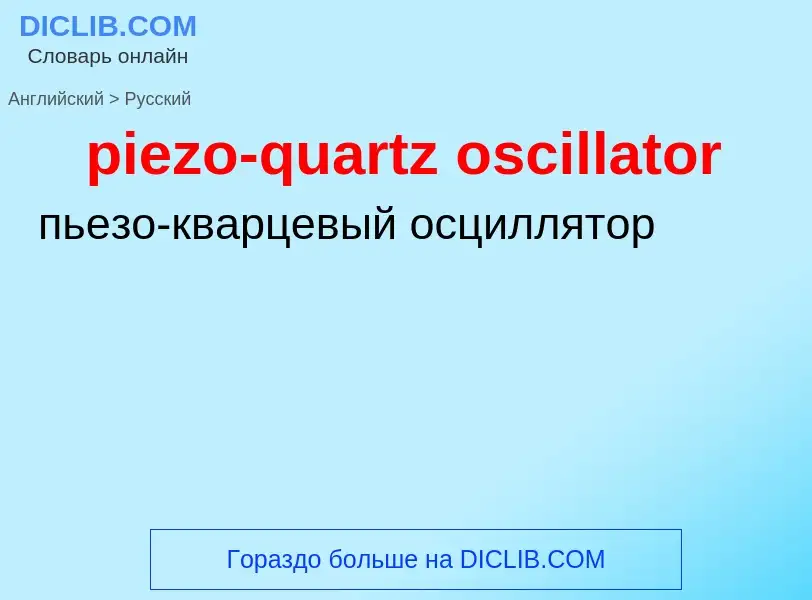Перевод и анализ слов искусственным интеллектом ChatGPT
На этой странице Вы можете получить подробный анализ слова или словосочетания, произведенный с помощью лучшей на сегодняшний день технологии искусственного интеллекта:
- как употребляется слово
- частота употребления
- используется оно чаще в устной или письменной речи
- варианты перевода слова
- примеры употребления (несколько фраз с переводом)
- этимология
piezo-quartz oscillator - перевод на русский
общая лексика
кварцевая нить
радиотехника
конденсатор гетеродина выравнивающий
техника
конденсатор сопрягающий
общая лексика
кварцевый генератор
общая лексика
кварцевый генератор (тактовых импульсов, тактовой частоты)
синоним
Смотрите также
общая лексика
кварцевое стекло
строительное дело
кварцевое стекло
общая лексика
плавленый кварц
Википедия

A crystal oscillator is an electronic oscillator circuit that uses a piezoelectric crystal as a frequency-selective element. The oscillator frequency is often used to keep track of time, as in quartz wristwatches, to provide a stable clock signal for digital integrated circuits, and to stabilize frequencies for radio transmitters and receivers. The most common type of piezoelectric resonator used is a quartz crystal, so oscillator circuits incorporating them became known as crystal oscillators. However, other piezoelectricity materials including polycrystalline ceramics are used in similar circuits.
A crystal oscillator relies on the slight change in shape of a quartz crystal under an electric field, a property known as inverse piezoelectricity. A voltage applied to the electrodes on the crystal causes it to change shape; when the voltage is removed, the crystal generates a small voltage as it elastically returns to its original shape. The quartz oscillates at a stable resonant frequency, behaving like an RLC circuit, but with a much higher Q factor (less energy loss on each cycle of oscillation). Once a quartz crystal is adjusted to a particular frequency (which is affected by the mass of electrodes attached to the crystal, the orientation of the crystal, temperature and other factors), it maintains that frequency with high stability.
Quartz crystals are manufactured for frequencies from a few tens of kilohertz to hundreds of megahertz. As of 2003, around two billion crystals are manufactured annually. Most are used for consumer devices such as wristwatches, clocks, radios, computers, and cellphones. However in applications where small size and weight is needed crystals can be replaced by thin-film bulk acoustic resonators, specifically if ultra-high frequency (more than roughly 1.5 GHz) resonance is needed. Quartz crystals are also found inside test and measurement equipment, such as counters, signal generators, and oscilloscopes.






![Inside construction of an HC-49 package [[quartz crystal]] Inside construction of an HC-49 package [[quartz crystal]]](https://commons.wikimedia.org/wiki/Special:FilePath/InsideQuartzCrystal.jpg?width=200)





![A [[quartz fiber dosimeter]], a device using a quartz fiber. A [[quartz fiber dosimeter]], a device using a quartz fiber.](https://commons.wikimedia.org/wiki/Special:FilePath/Direct-reading dosimeter.jpg?width=200)

![An [[EPROM]] with fused quartz window in the top of the package An [[EPROM]] with fused quartz window in the top of the package](https://commons.wikimedia.org/wiki/Special:FilePath/EPROM Intel C1702A.jpg?width=200)

